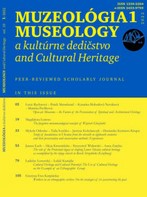Open-air Museums – the Future of the Presentation of Spiritual and Architectural Heritage
Open-air Museums – the Future of the Presentation of Spiritual and Architectural Heritage
Author(s): Lucie Rychnová, Patrik Maturkanič, Katarína Slobodová Nováková, Martina PavlíkováSubject(s): Cultural history, Museology & Heritage Studies, Architecture
Published by: Univerzita Komenského v Bratislave, Filozofická fakulta
Keywords: open-air museums; vernacular architecture; countryside; landscape; national heritage; Czech and Slovak Republic;
Summary/Abstract: The origins of “open-air museums” date back to the nineteenth century and from the very beginning were closely linked to efforts to capture, preserve and present folk culture. However, during the course of the twentieth century, especially in its later part, the concept of open-air museums began to expand. Open-air museums were founded that focused on urban, industrial and military environments, ecological issues, or on charting the life of prehistoric and ancient cultures. Along with this, the methodological concept for this specific type of institution saw some development, and the interdisciplinary approaches expanded in response, covering a wide range of humanities as well as natural sciences. Besides the academic approach, a social and community overlap is also required from these institutions. This article poses the question of how the concept of open-air museums can continue to develop and what direction the role of presenting cultural heritage in an open landscape could take in the future. The arguments herein are based on the philosophical and spiritual dimension of man’s dwelling in the world and his relationship to the landscape in which he lives. We believe that the future of open-air museums should, wherever possible, focus on the preservation of monuments in their historical context and especially in their natural links in terms of landscape, urbanism and architecture. To ensure this concept remains sustainable, it is necessary that these monuments be involved in the life of villages and communities, ideally also on the basis of cooperation between academia and local entities, which are usually villages or municipalities and citizens’ initiatives. Examples of such a direction can be seen in the founding and running of Rochus Park in the Uherské Hradiště region and in the concept of the association of villages called Mariánská zahrada in the Jičín region, both in the Czech Republic.
Journal: Muzeológia a kultúrne dedičstvo
- Issue Year: 10/2022
- Issue No: 1
- Page Range: 5-18
- Page Count: 14
- Language: English

